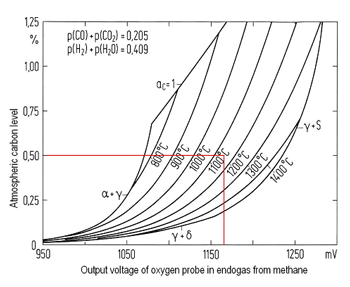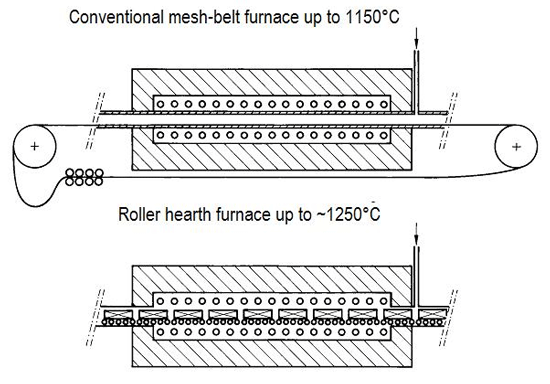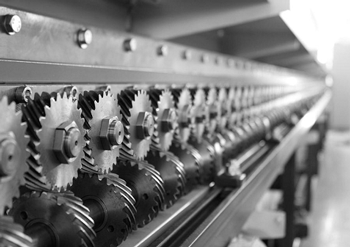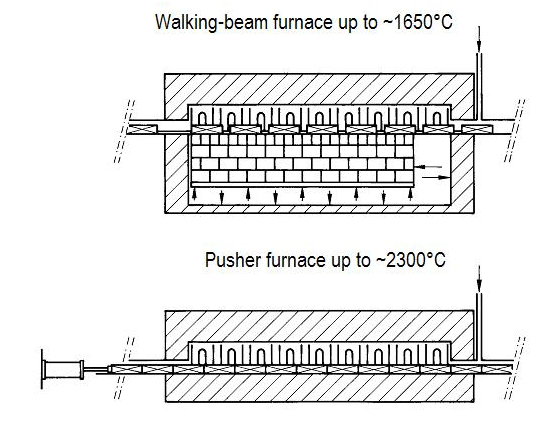2011 Hagen Symposium: An overview of Powder Metallurgy sintering furnaces
The four classes of sintering furnaces which are operated with a protective gas atmosphere can be classified as follows:
- Mesh-belt furnaces
- Roller hearth furnaces
- Walking-beam furnaces
- Pusher furnaces.
These furnace designs have different maximum temperatures depending on the materials used for the transport mechanism. All types are widely used in the Powder Metallurgy industry, with mesh belt furnaces being the most common.
Mesh belt furnaces
Mesh belt furnaces can have a belt width of up to four metres. They are usually heated electrically, although occasionally with gas. For sintering ferrous PM components, this “work horse” of the powder metallurgy industry is usually operated near its maximum temperature. As a consequence, the service life of the conveyor belt, which is exposed to permanent high stress and wear at the sintering temperature, is limited to approximately six months.
In a more advanced design, a walking-beam mechanism has been installed that carries the belt through the hot zone and reduces the stresses at the maximum temperature in order to prolong the service life of the belt. With this support, mesh-belt furnaces can be operated up to 1200°C.
Roller hearth, walking beam and pusher furnaces
While in mesh-belt furnaces the products to be sintered are placed directly onto the belt or on ceramic plates which lie directly on the belt for sintering, the other types of furnaces require the sinter goods to be packed and travel through the furnace in separate containers, usually in boats. These boats are made from plain iron or molybdenum.
The difference between the furnace types is in the transport mechanism. In the roller hearth furnace the boats are transported on rollers which are driven from outside the furnace. Rollers are made from SiC, and defective rollers can easily be exchanged even while the furnace is running.
For decades walking-beam furnaces have operated with a high degree of reliability in the PM industry. They are distinguished by a beam under the hot zone in the central axis of the furnace. From time to time the beam is lifted upwards, then forward and downwards again. With this movement it lifts the boats and transports them one boat length forward.
Finally, the pusher furnace has the driving mechanism entirely outside the furnace. The boats slide on their support and a punch pushes the boats forward step by step.
The importance of sintering atmospheres
Most important for the quality of the sintered parts is the sintering atmosphere. This serves two purposes, namely to reduce surface oxides on iron and alloying elements, and to ensure the final carbon content of the products.
The most widely used gases for sintering are hydrogen/nitrogen mixtures, often 5% hydrogen / 95% nitrogen, and endogas which is recently experiencing a renaissance. Endogas is generated on site by the partial combustion of a hydrocarbon gas, for example methane or natural gas.
The composition of endogas is not fixed because it depends on how it is generated. It is always a mixture of H2, N2, CO and CO2. The control techniques are fundamentally the same for hydrogen/nitrogen mixtures and endogas.
The reduction potential of the atmosphere is often related to the partial pressure of water vapour as expressed by the dew point. Prof. Beiss warned that the dew point may be misleading because the reduction potential of the atmosphere can vary greatly depending on the composition. Better ways to control the atmosphere, he stated, are by measuring the carbon dioxide content and the oxygen probe.

Carbon level of the sintering atmosphere as a function of the
oxygen probe output voltage (courtesy P. Beiss)
The partial pressure ratio of carbon dioxide versus carbon monoxide can easier be measured than the ratio between hydrogen and water vapour and it can equally be used to check the atmosphere.
The complex relationships between partial gas pressures, temperature and carbon level of the atmosphere are depicted in diagrams such as the one on the right. The usefulness of this plot may be demonstrated by the following example. At 1150°C a carbon level of 0.5% in the atmosphere is attained with an output voltage at the oxygen probe of 1165 mV.
This concludes our coverage of the 2011 Hagen Symposium. It is our hope that readers enjoyed this insight into what is the key annual event for the German-speaking PM community. The next symposium will be held from November 29-30 2012 at the Stadthalle in Hagen, Germany.
News | Articles | Market reviews | Search directory | Subscribe to e-newsletter








